Embracing Proactivity with Data Science and AI in Corporate Security
Historically, corporate security strategies have taken a reactive stance focused on guards, gates, and response. By harnessing data science and AI, security leaders can overcome key barriers and transition to more proactive approaches optimized for dynamic risk assessment and mitigation.
The emphasis on guards, gates, and incident response has been a standard approach in corporate security. While these components are important, an emerging stance is crucial for effective risk mitigation. Security leaders frequently cite three barriers to adopting a proactive strategy: time, expertise, and access to data. This blog elaborates on how data science and artificial intelligence (AI) transform corporate security, enabling leaders to ask the right questions, optimize resource allocation, and improve overall security.
Rethinking Priorities: From Reactive to Proactive
A proactive approach has become essential in security, characterized by ever-changing threats and vulnerabilities. Most corporate security budgets historically have been allocated toward reactionary measures: guards, gates, and refining crisis management and response capabilities. While these remain critical, they represent only a fraction of the bigger picture. By using data science and AI, security leaders can elevate their strategies and address critical questions that foster proactive decision-making.
How to Answer the Essential Questions
Transitioning from a reactive stance to a proactive one requires a shift in focus. The following questions can serve as a starting point:
- Optimal Resource Allocation: Are resources allocated efficiently across different markets, or is there room for adjustment?
- Dynamic Risk Assessment: Where do our highest risk areas lie, and how frequently do these risk profiles change?
- Strategic Resource Deployment: Is our security team investing their time and efforts in the most strategic locations?
- Budget Justification: How can we better substantiate security budget needs to leadership?
- Tailored Approaches: When is it appropriate to move beyond a standardized security approach and tailor strategies to specific contexts?
- Enhanced Response Readiness: Where can we improve our readiness to facilitate more effective incident responses?
Empowering Data Science and AI
Data science and AI are game-changers in corporate security. These technologies enable security leaders to transform data into actionable insights efficiently and effectively. Organizations can proactively address security concerns, optimize budget utilization, and enhance overall operational efficiency by reducing the time required for data processing, analysis, and interpretation.
The Path Forward: Embracing Proactivity
The journey toward a proactive security posture involves a fusion of technological innovation, strategic thinking, and a willingness to embrace change. Data science and AI offer the tools to tackle the challenges hindering proactivity. By leveraging these tools, security leaders can transition from reactive to visionary.
Overcoming Barriers
Three primary barriers have traditionally obstructed the path to proactivity:
- Time Constraints: The rapid pace of the corporate world often leaves security teams with limited time for proactive initiatives. Data science and AI expedite the process of sifting through vast amounts of data, empowering teams to extract insights efficiently.
- Expertise Gap: Implementing a proactive security approach demands data analysis and predictive modeling expertise. Data science and AI solutions bridge this gap, enabling security leaders to make informed decisions without requiring an extensive background in data science or intimate knowledge of a specific location.
- Data Accessibility: Without timely and relevant data access, even the most adept security leaders struggle to devise proactive strategies. Data science and AI solutions aggregate and analyze diverse data sources, providing a comprehensive view of the security landscape.
Conclusion
Security leaders must safeguard their organizations against known threats and anticipate and mitigate emerging risks. Data science and AI provide the means to pose questions, optimize resource allocation and security strategies. By harnessing these technologies, security leaders can enhance their organization's security and create a safer environment for their people, assets, and operations. The journey to proactivity begins with a single step - a step empowered by the insights and capabilities that data science and AI bring.
Takeaways

Join 1100+ security leaders getting new ideas on how to better protect their people and assets.

.jpg)







